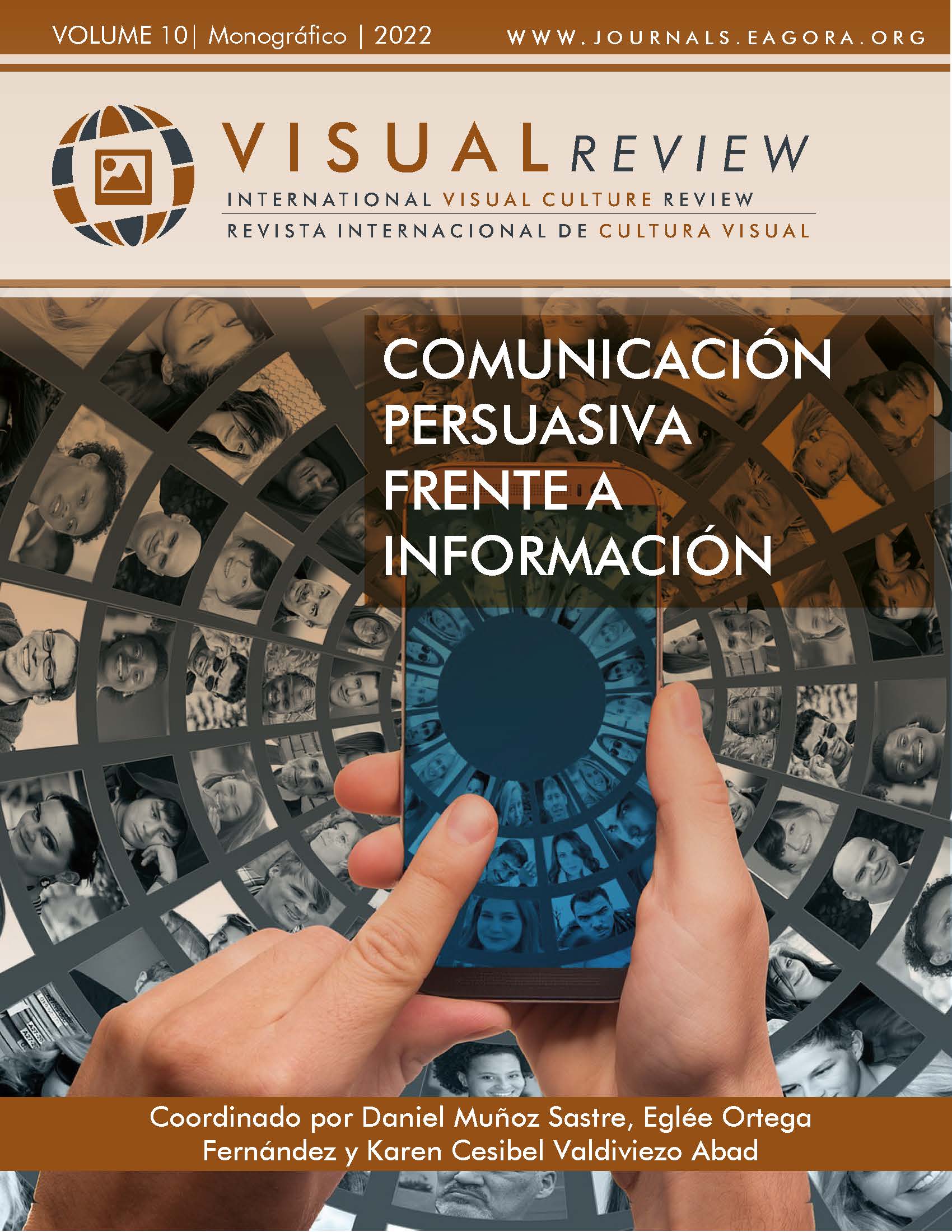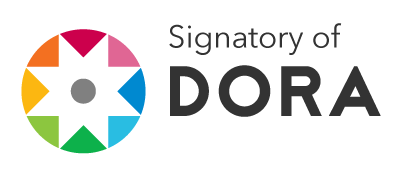Censorship and Social Networks
Zahara Case
DOI:
https://doi.org/10.37467/revvisual.v9.3554Keywords:
Censorship, Social networks, Notoriety, Streisand effect, Online Communication, Zahara, Viral MarketingAbstract
When there is an increase in media notoriety as a result of censorship, the "Streisand Effect" can occur. This article is a case study of the singer Zahara and the process by which they went about removing a concert poster. The primary goal is to track the impact of these events on social media. The findings demonstrate the impact of the controversy on social media, as measured by variables such as the number of followers or likes in publications published close to the date of the censorship announcement.
Downloads
Global Statistics ℹ️
|
797
Views
|
751
Downloads
|
|
1548
Total
|
|
References
Agam, D. (2017). The impact of viral marketing through Instagram. Australasian Journal of Business, Social Science and Information Technology, 4(1), 40-45.
Aguado Guadalupe, G., & García García, A. (2009). Del Word-of-mouth al Marketing viral: aspectos claves de la comunicación a través de redes sociales. Revista Comunicación y Hombre 5, 1-13. DOI: https://doi.org/10.32466/eufv-cyh.2009.5.112.41-51
Aguilar Arcos, V., San Martín Gutiérrez, S., & Payo Hernanz, R. (2014). La aplicación empresarial del marketing viral y el efecto boca-oreja electrónico. Opiniones de las empresas. Cuadernos de Gestión, 14(1), 15-31. https://doi.org/10.5295/cdg.120348va DOI: https://doi.org/10.5295/cdg.120348va
Caldevilla Domínguez, D. (2010). Las Redes Sociales. Tipología, uso y consumo de las redes 2.0 en la sociedad digital actual. Documentación de las Ciencias de la Información, 33, 45-68.
Gómez Nieto, B., & Benito Vielba, C. (2014). Presente de la comunicación organizacional en la PYME española. Razón y Palabra, 18(86).
IAB Estudio. (2020). Estudio de Redes Sociales 2020. https://bit.ly/3NQyoZZ
Jansen, S., & Martin, B. (2015). The Streisand effect and censorship backfire. International Journal of Communication, 9, 656-671.
Jaramillo, O., & Castellón, L. (2017). El derecho al olvido en internet y el efecto Streisand: aplicabilidad y soluciones. In M. J. Labrador (Ed) Google: Derecho al olvido y desafíos éticos en el escenario mediático digital. Santiago: Ril Editores.
Martínez-Sánchez, M., Nicolás-Sans, R., & Bustos Díaz, J. (2021). Analysis of the social media strategy of audio-visual OTTs in Spain: The case study of Netflix, HBO and Amazon Prime during the implementation of Disney +. Technological Forecasting and Social Change, 173, 121178. https://doi.org/10.1016/j.techfore.2021.121178 DOI: https://doi.org/10.1016/j.techfore.2021.121178
Paús, F., & Maccchia, L. (2014). Marketing viral en medios sociales: ¿qué contenido es más contagioso y por qué? Revista Digital Ciencias Administrativas. FCE-UNLP., 4, 67-82.
Ramírez, V. (2022). Efecto Streisand. Las reglas del juego en las redes sociales y en la web 2.0. Actualidad Jurídica Aranzadi, 833, 13.
Ruiz del Olmo, F. J., & Bustos Díaz, J. (2020). Las imágenes publicadas en Twitter como forma de comunicación política. El caso de las elecciones generales del año 2016 en España. Revista Latina de Comunicación Social, 75, 313-326. https://doi.org/10.4185/RLCS-2020-1428 DOI: https://doi.org/10.4185/RLCS-2020-1428
Ruiz Olabuénaga, J. (2012). Teoría y Práctica de la investigación cualitativa. Bilbao: Deusto.
Sasaki, D. (2011). Fama, seguidores, anonimato y activismo. En Ravneet Singh et al. (Eds) Tecnología y participación ciudadana en la construcción democrática, 173-189.
Selman, H. (2017). Marketing Digital. Ibukku.
Stewart, D. R., & Bunton, K. (2016). Practical Transparency: How Journalists Should Approach Digital Shaming and the Streisand Effect. University of Baltimore Journal of Media Law & Ethics, 5(3/4), 4-18.
Syarifuddin, T. I. (2021). Regional Head Communication Patterns on Social Media in Handling the Covid-19 Pandemic. IOP Conference Series: Earth and Environmental Science, 717(1), https://doi.org/10.1088/1755-1315/717/1/012020 DOI: https://doi.org/10.1088/1755-1315/717/1/012020
Valle Litum, L. A. (2020). Impacto del marketing viral en Instagram. Revista Espacios, 41(24), 1-14.
Vélez Herrera, J. I. (2015). Influencing the cyberspace humorously: imemes and other phenomena. Versión. Estudios de Comunicación y Política, 35, 130-146.
Zaharamania. (n.d.). https://zaharamania.com/events/toledo-alive/?v=04c19fa1e772
Downloads
Published
How to Cite
Issue
Section
License
Those authors who publish in this journal accept the following terms:
-
Authors retain copyright.
-
Authors transfer to the journal the right of first publication. The journal also owns the publishing rights.
-
All published contents are governed by an Attribution-NoDerivatives 4.0 International License.
Access the informative version and legal text of the license. By virtue of this, third parties are allowed to use what is published as long as they mention the authorship of the work and the first publication in this journal. If you transform the material, you may not distribute the modified work. -
Authors may make other independent and additional contractual arrangements for non-exclusive distribution of the version of the article published in this journal (e.g., inclusion in an institutional repository or publication in a book) as long as they clearly indicate that the work was first published in this journal.
- Authors are allowed and recommended to publish their work on the Internet (for example on institutional and personal websites), following the publication of, and referencing the journal, as this could lead to constructive exchanges and a more extensive and quick circulation of published works (see The Effect of Open Access).













